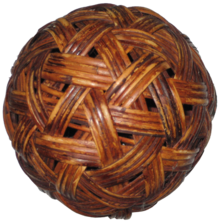Assalamualaikum kawan2 :)
Apa khabar anda sume??sihat2 belaka x??
lama da aku x update blog ni la.Bkn xnk update cume xde masa n ditambah lak dgn sifat yg malas nk menaip,..hehehe..
Entry kali ni aku nk cite pasal makan2 la coz aku ni suka makan sampai bdn pn da naik berat badan :(
Cam ne nk diet ni..Stress aku !! tpi kawan aku salu kata selagi kte hidup kite kena mkn jgn ditahan nafsu mkn tu..Betul gak kata kawan aku tu si FAtin farhana mauahaha.
Bulan JUNE ni rezeki aku murah dgn makan + ada org belanja makan..Yummy2 + untung ada org belanja..hehe..Jimat duit tau.wawawa.
Firstly,aku mkn satay celup Di Bukit Beruang dgn family aku,konon-kononya nk try la makan coz first time nk makan satay celup halal ni.. sedap jgk la BUT MAKE SURE JGN AMIK MAKANAN SEAFOOD MAHAL!! AKU SUDAH TERKENA..
ni je pic yg aku sempat snap laa..comel x ??
Pada keesokannya hari,abg ipar n akak aku belanja mkn DI ALAI..Perhh memng kenyang gila perut aku..Kali ni mkn di MEDAN SELERA DI ALAI..sumpah gila ramai org seh coz tempat tu memng terkenal.
Kena pandai2 la amik lauk pauk untuk dimasak coz harga dia boleh tahan mhl jgk la but X TIPU SURE KORANG KENYANG SAMPAI NK MELETUP PERUT Korng.
hahaha
Antara menu yg kami pesan :)
IKAN CENCARU BAKAR YUMMY2
SOTONG GORENG TEPUNG..SEDAP GILA SEH!!
KUPANG & UDANG GORENG :)
perhh.kenyang perut aku mkn sume ni..Thanks to abg ipar aku N akak aku.nuahaha..
Next time belanja aku mkn lagi ye :)
Last 2 week ago,aku promote la kt kwan2 aku pasal aku mkn satay celup tu. n then dorang ajak aku kn kt sana,aku pn bawa je dorang tpi kami sume naik keta fatin..hehhehe..thanks Fatin.muaha..
antara photo yg sempat kami snap la :
my girlss muahaha
MY BFF luve u guys
my girls
licin kami makan.time ni sume ngah lapau
byk kan kami mkn..ni sume jumlah kami makan..
Alhamdulilah kenyang sesangat lps kn..Tpi kawan aku si fathiah da ketagih nk mkn lagi kt sini..haha..
Pape pn bulan JUNE ni bulan yg aku kenyang dgn makan..Lepas ni sure x dpt mkn cm ni lagi ..
Coz bulan 7 kite sume da nk puasa ..
Kepada sesiapa yg belum ganti puasa tu cepat2 la ganti ye :)
Selamat menyambut bulan ramadhan ye kawan2 saya sume..luve u guys..muahahah
THANKS KAWAN2 COZ SUDI BACA BLOG SYA NI :)











.gif)






























